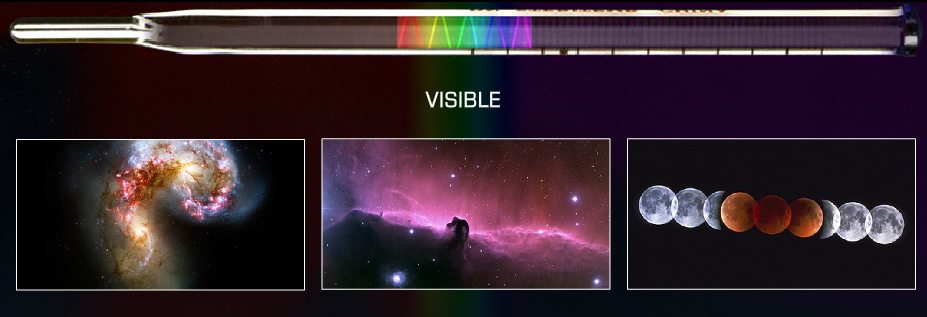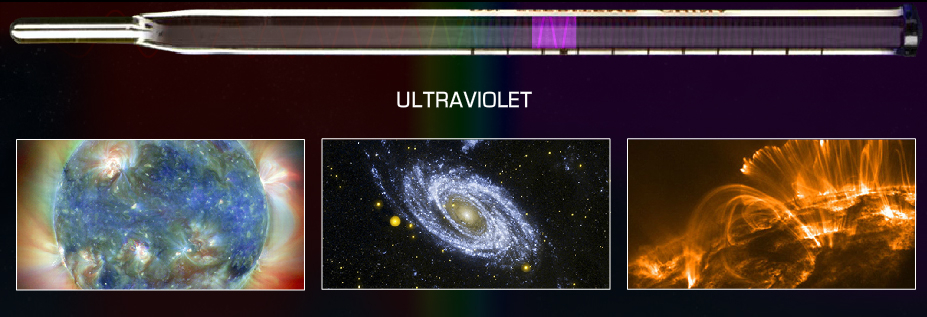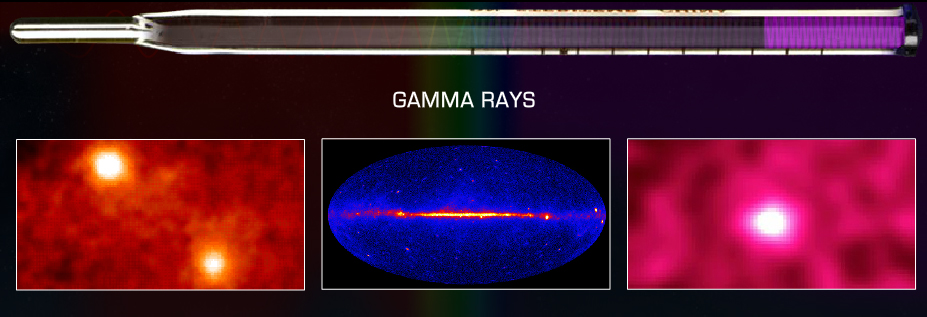
Radio: Radio waves have the longest wavelengths in the electromagnetic spectrum. These waves can range from less than one centimeter to greater than 100 meters (this is bigger than the size of a football field). The energy of radio waves is much lower than the energy of other types of electromagnetic radiation. Radio waves can bring music to a radio, and carry signals for a television and cellular phone.
Microwave: Microwaves have wavelengths that can be measured in centimeters. The longer microwaves, those closer to a foot in length, are the waves which can heat food in a microwave oven. Microwaves are good for transmitting information from one place to another because microwave energy can penetrate haze, light rain and snow, clouds, and smoke. Shorter microwaves, those just a few inches long, can be used for radar like the doppler radar in weather forecasts.

Infrared: Infrared light lies between the visible and microwave portions of the electromagnetic spectrum and has a range of wavelengths, just like visible light has wavelengths that range from red light to violet. "Near infrared" light is closest in wavelength to visible light and "far infrared" is closer to the microwave region of the electromagnetic spectrum. The longer, far infrared wavelengths are about the size of a pin head and the shorter, near infrared ones are the size of microscopic cells. We experience far-infrared radiation every day in the form of heat that we feel from sunlight, a fire, or a warm sidewalk. Shorter. near infrared waves are not hot and cannot be felt. These shorter wavelengths are the ones used by your TV's remote control.

Visible: The word light usually makes one think of the colors of the rainbow or light from the Sun or a lamp. This light, however, is only one type of electromagnetic radiation. Electromagnetic radiation comes in a range of energies, known as the electromagnetic spectrum. The spectrum consists of radiation such as gamma rays, x-rays, ultraviolet, visible. infrared and radio.

Ultraviolet: Ultraviolet (UV) light has shorter wavelengths than visible light. Though these waves are invisible to the human eye. some insects, like bumblebees, can see them. Our Sun emits light at all the different wavelengths in electromagnetic spectrum. but it is ultraviolet waves that are responsible for causing our sunburns.
Though some ultraviolet waves from the Sun penetrate Earth's atmosphere, most of them are blocked from entering by various gases like Ozone. Some days. more ultraviolet waves get through our atmosphere. Scientists have developed a UV index to help people protect themselves from these harmful ultraviolet waves.

X-ray: Light is the by-product of the constant jiggling, vibrating, hurly-burly of all matter. A new form of radiation was discovered in 1895 by Wilhelm Roentgen, a German physicist. He called it X-radiation to denote its unknown nature. This mysterious radiation had the ability to pass through many materials that absorb visible light. Very high temperatures (millions of degrees Celsius) produce X-rays. The energies of X-ray photons range from hundreds to thousands of times higher than that of optical photons. The Earth's atmosphere is thick enough that virtually no X-rays are able to penetrate from outer space all the way to the Earth's surface.

Gamma Ray: Electromagnetic radiation travels in waves, just like waves in an ocean.The energy of the radiation depends on the distance be.een the crests (the highest points) of the waves. or the wavelength. In general the smaller the wavelength. the higher the energy of the radiation. Gamma rays have wavelengths less than ten trillionths of a meter which is about the size of the nucleus of an atom. This means that gamma rays have very high-energy.

